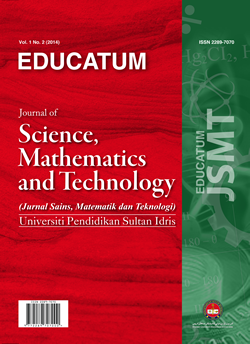Numerical Analysis for Prediction of Optimum Deformation of Long Tunnel Crown Stability with Respect to Excavation Depth
DOI:
https://doi.org/10.37134/ejsmt.vol9.1.8.2022Keywords:
Underground Structure, Tunnel Crown Stability, Excavation, East Coast RailwayAbstract
Optimum stability of tunnel structures and ground movements are influenced by excavation, and these are issues of greater concern as far as the stability of any underground structure is concerned. The critical area of concern is the stability of the tunnel crown which requires special attention to ensure the stability of the tunnel structures and the safety of both man powers and the equipment used. Before the advent of powerful design aids tools such as numerical analysis software, the tunnel’s design was primarily based on experience. The use of numerical analysis software has made it possible to model and predict the actual site conditions to achieve safer and more economical designs. This study aims to understand and predict the stability of the tunnel crown with respect to excavation depth by using Plaxis 2D v8 finite element analysis software and East Coast Railway, Malaysia tunnel project as a case study. The site condition was modeled and excavated at various tunnel depths of 0.5D,1.0D,1.5D,2.0D,2.5D to 3.0D which are around 7 m to 42 m depths, where D is the tunnel diameter. Based on the output results, both vertical and horizontal displacements show appreciable increases as the tunnel depths get deeper due to overburden. The result confirmed that there is a clear relationship between the tunnel excavation depth and the stability of the tunnel crown.
Downloads
References
Mohammed, J. 2015. Underground Structures Support, Stress & Strain of Tunnel.
Yavuz, H. 2006. Support Pressure Estimation for Circular and Non-Circular Openings Based on a Parametric Numerical Modelling Study. The South African Institute of Mining and Metallurgy SA ISSN 0038–223X/3.00 + 0.00. pp.129-138.
Ingerslev, C. (2010). Immersed and floating tunnels. Procedia Engineering, 4, 51–59. https://doi.org/10.1016/j.proeng.2010.08.007.
Ongodia, J.E. (2018). Geotechnical Engineering Design of a Tunnel Support System - A Case Study of Karuma (600MW) Hydropower Project. April 2017, 227.
Spackova, O. 2012. Risk Management of Tunnel Construction Projects. PhD_Dissertation Czech Technical University in Prague.
ITA, 2009. General Report on Conventional Tunneling Method ( No. 002). International Tunneling Association (ITA) ISBN: 978-2-9700624-1-7 No.002.
Arshad, & Abdullah, R. A. (2016). A review on selection of tunneling method and parameters effecting ground settlements. Electronic Journal of Geotechnical Engineering, 21(14), 4459–4475.
Farrokh, E., Rostami, J., 2009. Effect of adverse geological condition on TBM operation in Ghomroud tunnel conveyance project. Tunnelling and Underground Space Technology 24, 436–446.Ong, D. E. L., & Choo, C. S. (2016). Back-analysis and finite element modeling of jacking forces in weathered rocks. Tunnelling and Underground Space Technology, 51, 1–10. https://doi.org/10.1016/j.tust.2015.10.014.
Yazdani-Chamzini, A., & Yakhchali, S. H. (2012). Tunnel Boring Machine (TBM) selection using fuzzy multicriteria decision making methods. Tunnelling and Underground Space Technology, 30, 194–204. https://doi.org/10.1016/j.tust.2012.02.021.
RTM, 2009. Technical Manual for Design and Construction of Road Tunnels -Civil Elements Road Tunnel Manual (RTM) FHWA-NHI-09-010 U.S. Department of Transportation Federal Highway Administration Publication No. FHWA-NHI-10-034.
Hung, J., Monsees, J., Munfah, N., & Wisniewski, J. (2009). Technical Manual for Design and Construction of Road Tunnels — Civil Elements. National Highway Institute, December, 702.
Fasihnikoutalab MH, Huat BBK, Asadi A, Daneshmand S, 2012. Numerical stability analysis of tunnel by PLAXIS. Electronic Journal of Geotechnical Engineering, 17: 451–461.
Franzius JNN, 2002. Behavior of building due to tunnel induced settlement. University of London, Imperial College of Science Technology and Medicine, PhD thesis, 360p.
Yoo, C. (2004). Interaction between tunnelling and groundwater. Tunnelling and Underground Space Technology, 19(4–5), 523–524. https://doi.org/10.1016/j.tust.2004.02.117.
Ong, D & Choo , C. (2016). Back-analysis and fine element modelling of jacking forces in weathered rocks. Tunnelling and underground space technology, 51(1), 1-10.
Downloads
Published
Issue
Section
License
Copyright (c) 2022 Lawal Ezekiel Abiodun, Nurul Ainain Mohd Salim

This work is licensed under a Creative Commons Attribution-NonCommercial-ShareAlike 4.0 International License.





